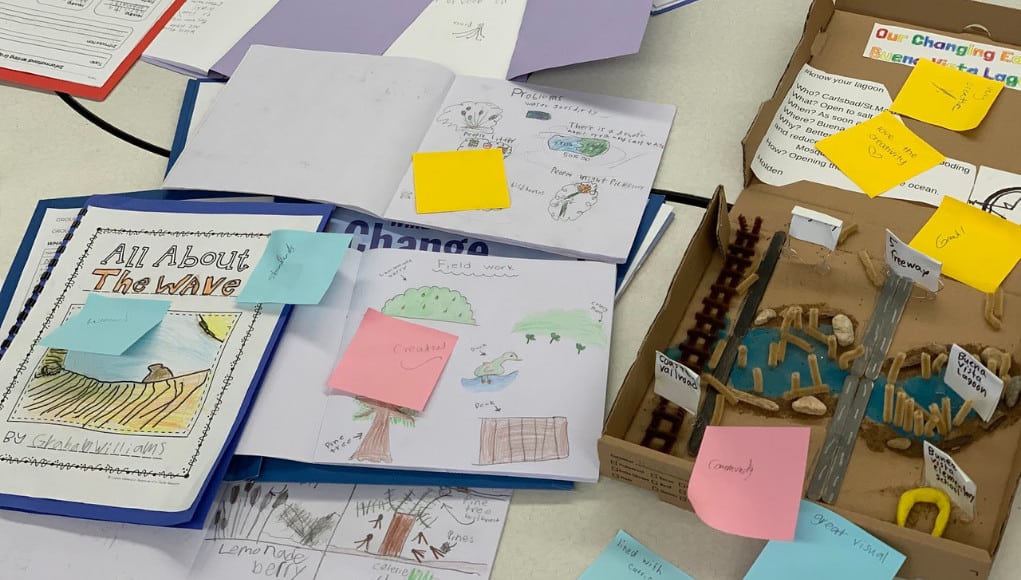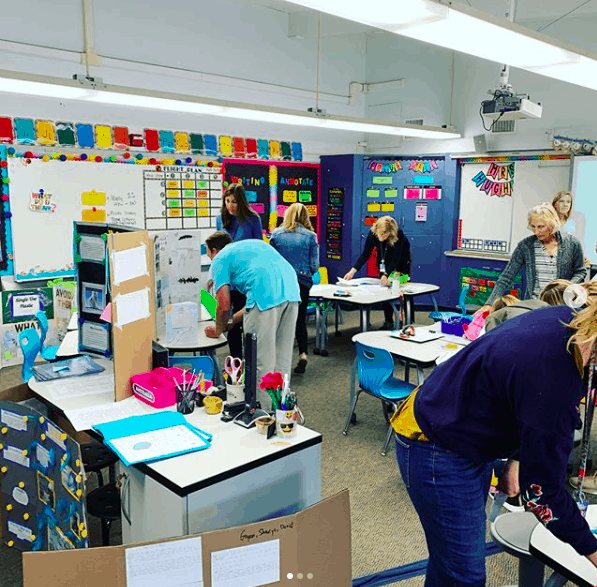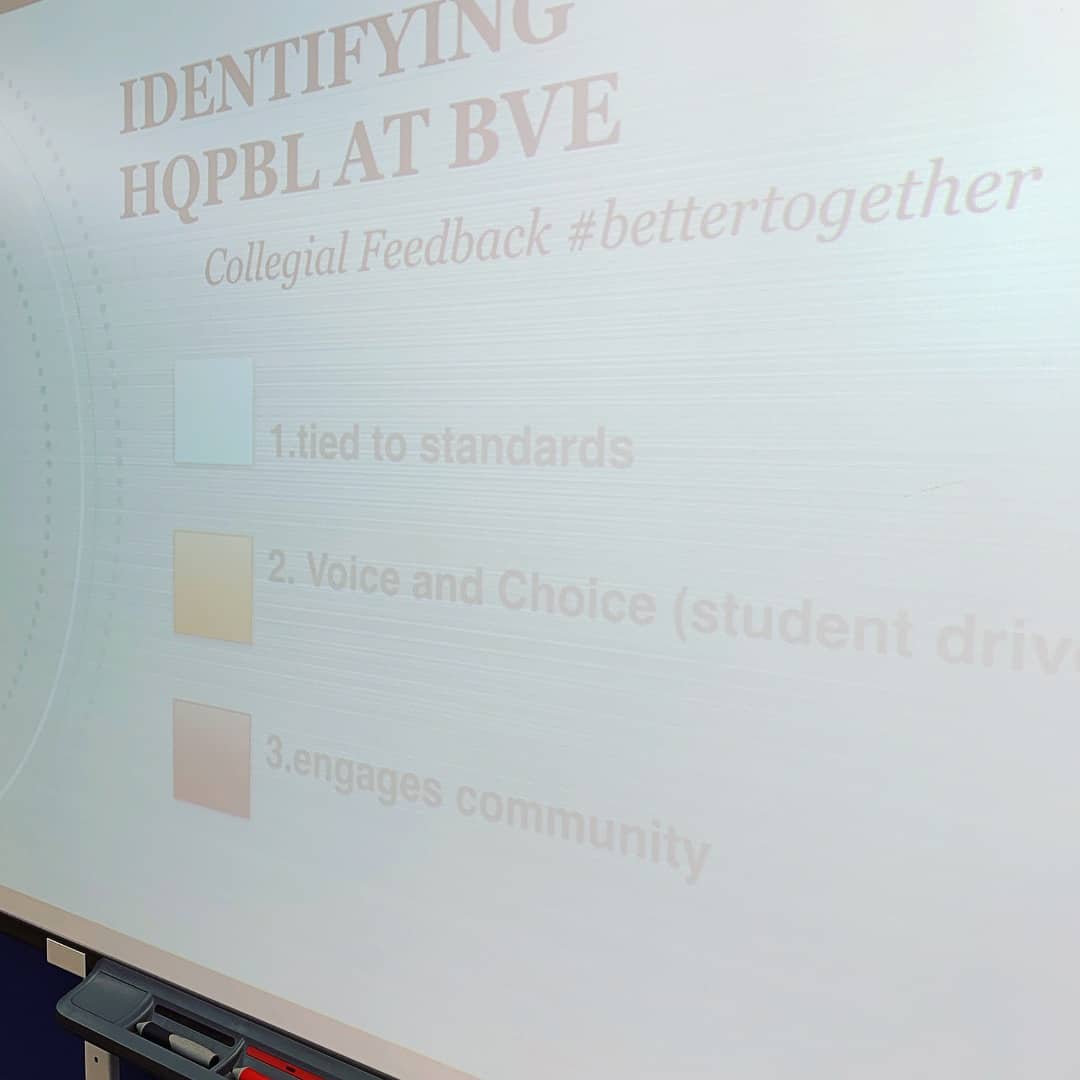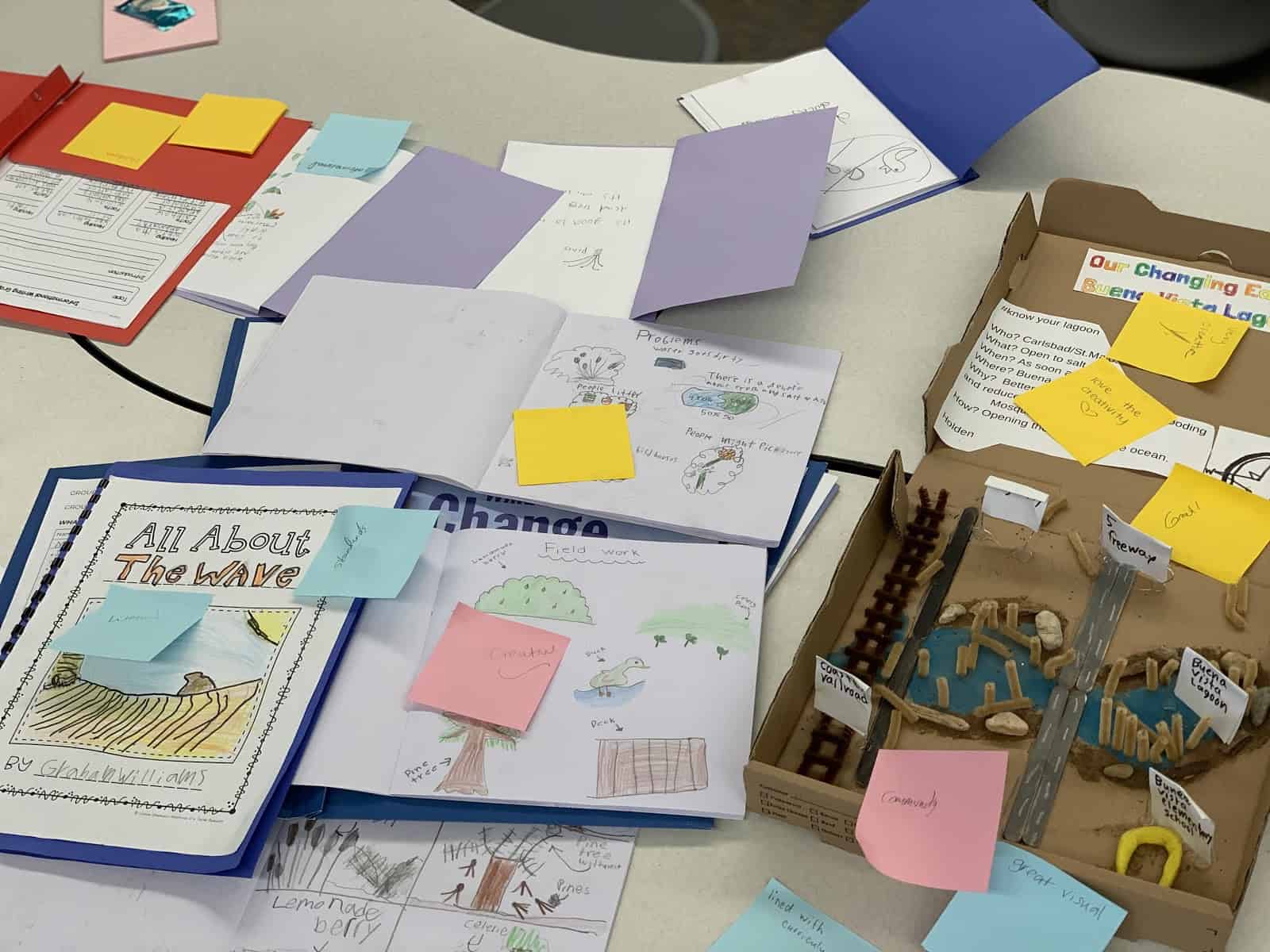Making PBL Stick Part 2: Leading a Reflective Year

By: Jenny Pieratt
Are you an instructional leader looking for small ways to make big shifts that move your staff forward in their project-based learning (PBL) practice this year? Hint: your power move is all about reflection, and I’ve got you covered with practical strategies from the trenches! Consider any number of the following ideas to help you collectively move a group of teachers to the next level of PBL implementation this year.
The Power of a Project Audit
I know the word ‘audit’ feels icky, but by definition, it means an official inspection of an individual’s or organization’s accounts, typically by an independent body. When it comes to our craft looking at all elements of it, with somewhat objective eyes, can lead to big shifts in student outcomes.
You can go about a project audit in many ways, here are just a few of my tried-and-true strategies:
1. Chart characteristics of quality in student work. Ask teachers to bring student work from their most recent project to your next staff meeting. Have each teacher create a three-column chart on poster paper. Each column should be labeled as one of the three components of your staff definition of high quality PBL. Then conduct a silent gallery walk where teachers roam the room analyzing colleagues’ projects and identifying which components of your staff ‘North Star’ are present in the student work they see, listing those components in the corresponding column on the poster paper next to the student work. Teachers can return to their posters and see which columns may be lacking, or perhaps leverage those columns that appear to be ‘Bright Spots.’ Have teachers then use these posters to help inform goals for improving the project next time around.

2. Tag tenets of quality in project work. Have teachers bring student work from their most recent project to your next staff meeting. You can provide a color code key for your North Star to match with sticky notes provided to staff (for example pink = voice and choice, blue = real world connections, yellow = 21st-century skills). Ask the staff to conduct a silent gallery walk in which they place their colorful sticky notes where they see components of the staff definition of quality PBL directly on/in the student work. Teachers can return to their work and do a quick gut check; is there a rainbow of sticky notes? Is there some work that does not have any sticky notes? Those are areas to zoom in on when they refine the project for next time!


3. Do a tuning protocol. I’m yet to run a tuning protocol where the majority of the staff didn’t feel like the feedback they received from colleagues didn’t push their practice and help them improve their project plans. In fact, teachers often beg for these because they are so helpful! in addition to helping teachers reflect, it also serves as a bonus calibration exercise when you create cross-grade or cross-content area groups.
Prior to running any protocols, it’s important to address issues related to staff culture, in particular norms. The norms I often offer up are the following:
- Hold one another to the protocol
- Keep it about our craft (not about the teacher)
- We are better together
Whichever protocol you run, it’s important to have those teachers who are receiving feedback take notes, and then build in time at the end of the protocol to debrief the process as a group, giving teachers time to share feedback with their project planning team and generating goals/next steps based on what they took away from the protocol.
4. Co-create a staff rubric for reflection. Warning: this can be a messy process, but the risk is worth the reward! In a recent workshop on Project Reflection and Refinement at Lake Elementary, I asked the staff to consider what each of the components of their North Star looked, sounded and felt like. From there, we started brainstorming what student outcomes we would see for each component of the North Star.
As teachers shared their ideas, I attempted to turn them into descriptors for ‘proficient’ in a staff rubric; all in real-time on a projector in front of 45 of them. It was a beautiful mess because it was authentic, I reflected their ideas and their voice and It modeled a best practice they could do with their students in their next project. I then turned over the ‘bones’ of our rubric to become a teacher reflection tool that the school leadership team could continue to work on and use in their next project reflection professional development exercise.
These four steps toward building in collective reflection can lead to big wins not only for student outcomes, but your professional culture as well! Do you have other ideas for staff reflection that you have tried or want to try? Comment below and share. After all, we are better together.
For more, see:
- Making PBL Stick Part One: All It Takes is 5 Minutes
- Service Learning: Designed to Motivate and Inspire
- Does Mastery Mean Mastered
Stay in-the-know with all things innovations in learning by signing up to receive our weekly Smart Update.
Jenny Pieratt is the president and founder of CraftEd. You can find her on Twitter at @Crafted_JennyPieratt





0 Comments
Leave a Comment
Your email address will not be published. All fields are required.